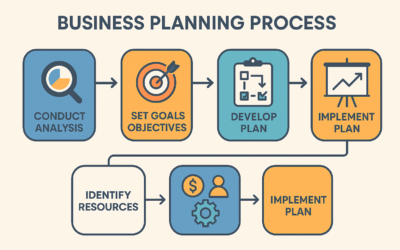No matter what industry your small business operates in, the health and well-being of your employees should always be your chief priority. Luckily there are several ways to design a safety plan whether your work involves office tasks, or your construction sites require a great deal of heavy equipment.
Start a Safety Strategy Along with OSHA Guidelines
To get you started in complying with the Occupational Safety and Health Administration (OSHA), you need to draft a safety strategy, the founding document of your company’s safety policy.
Your Safety Strategy is ultimately a philosophical document, emphasizing your knowledge that employees deserve to work in a safe environment and professing your commitment to guarantee this and plan for emergencies depending on the industry you work in.
This could mean planning job site safety for a construction company, declaring hygiene to be paramount in a restaurant setting, or announcing your commitment to proper evacuation routes and protocol if your office workers must quickly vacate the premises.
Plan For Both Prevention and Minimization
Accidents on the job site are inevitable, but that doesn’t mean that you can’t do your best to prevent them. This might be something as simple as requiring all construction workers to sign a contract that they will wear a hard hat whenever on a job site.
If there is an emergency, your safety plan should instruct workers on how to deal with any plausible issue given their work environment. Office workers should know where your fire extinguishers are, how to operate them, and how to use your fire evacuation routes should this prove insufficient.
Meanwhile, workers in more physical environments should know the proper medical procedure if there is an on-site accident. This might cover the treatment of chemical injuries in a laboratory environment. Meanwhile, employees dealing with heavy equipment should know how to best stabilize a physical injury before medical professionals can arrive.
While you should always plan to minimize work-related accidents and injuries, they are inevitable. By preventing as many work accidents as possible, you can still prepare your crew to respond properly when something does arise.
Get Your Whole Crew Involved
Safety procedures should be reviewed annually if not more often, but this is not a topic that should be kept to management. As the business owner, your base level workers and their immediate managers should also be consulted on workplace safety.
A brief check-in with a department manager or line foreman can provide a wealth of insight as to what your workers understand about your firm’s safety protocols, from what training is lacking to what instruction might border on excessive.
Get a feeling for the situation on the ground and bring it back to senior management to keep your workers as safe as possible. Your upper management can help you decide on a larger course of action, but this is only the case after you gain an understanding of how your policies are being understood on the micro-level.
Global Resources Reviews can make sure that you are always taking care of your most valuable asset, your employees.

0 Comments